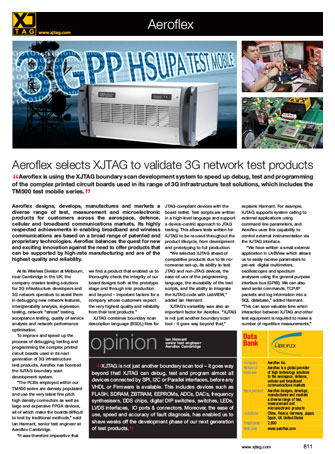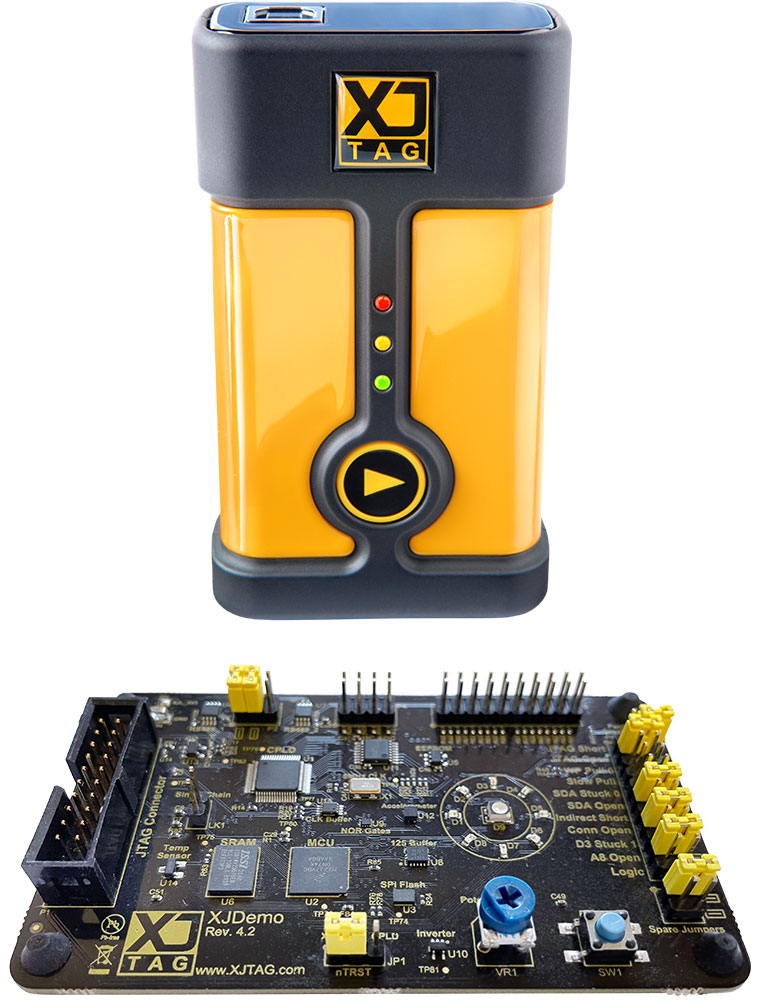
Aeroflex selects XJTAG to validate 3G network test products
Aeroflex is using the XJTAG boundary scan development system to speed up debug, test and programming of the complex printed circuit boards used in its range of 3G infrastructure test solutions, which includes the TM500 test mobile series.
Aeroflex designs, develops, manufactures and markets a diverse range of test, measurement and microelectronic products for customers across the aerospace, defence, cellular and broadband communications markets. Its highly respected achievements in enabling broadband and wireless communications are based on a broad range of patented and proprietary technologies. Aeroflex balances the quest for new and exciting innovation against the need to offer products that can be supported by high-rate manufacturing and are of the highest quality and reliability.
At its Wireless Division at Melbourn, near Cambridge in the UK, the company creates testing solutions for 3G infrastructure developers and 3G network operators to assist them in debugging new network features, interoperability analysis, regression testing, network “stress” testing, acceptance testing, quality of service analysis and network performance optimisation.
To improve and speed up the process of debugging, testing and programming the complex printed circuit boards used in its next generation of 3G infrastructure test products, Aeroflex has licensed the XJTAG boundary scan development system.
“The PCBs employed within our TM500 series are densely populated and use the very latest fine pitch high density connectors as well as large and expensive FPGA devices, all of which make the boards difficult to test by traditional methods,” said Ian Hannant, senior test engineer at Aeroflex Cambridge.
“It was therefore imperative that we find a product that enabled us to thoroughly check the integrity of our board designs both at the prototype stage and through into production and beyond – important factors for a company whose customers expect the very highest quality and reliability from their test products.”
XJTAG combines boundary scan description language (BSDL) files for JTAG-compliant devices with the board netlist. Test scripts are written in a high-level language and support a device-centric approach to JTAG testing. This allows tests written for XJTAG to be re-used throughout the product lifecycle, from development and prototyping to full production.
“We selected XJTAG ahead of competitive products due to its no-nonsense set-up, its ability to test JTAG and non-JTAG devices, the ease-of-use of the programming language, the reusability of the test scripts, and the ability to integrate the XJTAG code with LabVIEW,” added Ian Hannant.
XJTAG’s versatility was also an important factor for Aeroflex. “XJTAG is not just another boundary scan tool – it goes way beyond that,” explains Hannant. For example, XJTAG supports system calling to external applications using command line parameters, and Aeroflex uses this capability to control external instrumentation via the XJTAG interface.
“We have written a small external application in LABView which allows us to easily receive parameters to pre-set digital multimeters, oscilloscopes and spectrum analysers using the general purpose interface bus (GPIB). We can also send serial commands, TCP/IP packets and log information into a SQL database,” added Hannant. “This can save valuable time when interaction between XJTAG and other test equipment is required to make a number of repetitive measurements.”

XJTAG is not just another boundary scan tool – it goes way beyond that!
XJTAG can debug, test and program almost all devices connected by SPI, I2C or Parallel interfaces, before any VHDL or Firmware is available. This includes devices such as FLASH, SDRAM, ZBTRAM, EEPROMs, ADCs, DACs, frequency synthesisers, DDS chips, digital DIP switches, switches, LEDs, LVDS interfaces, IO ports & connectors.
Moreover, the ease of use, speed and accuracy of fault diagnosis, has enabled us to shave weeks off the development phase of our next generation of test products.

Company: Aeroflex Inc., HQ UK
Nature of business:
Aeroflex is a global provider of high technology solutions to the aerospace, defence, cellular and broadband communications markets
Main product:
Aeroflex designs, develops, manufactures and markets a diverse range of test, measurement and microelectronic products
Locations:
China, France, Germany, Japan, Spain, UK, United States
Employees: 2,600
Web site: www.aeroflex.com

Configure your products














